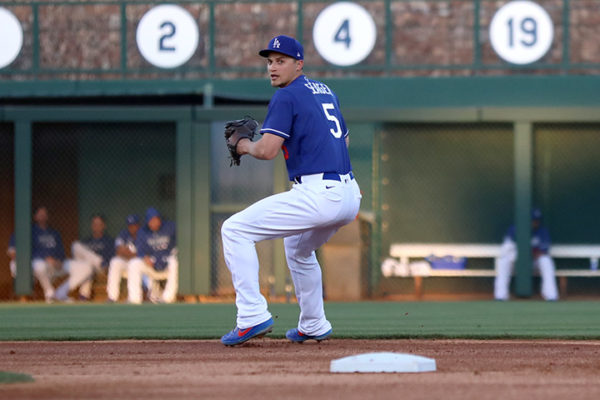
In case you missed it last week, the Padres signed Fernando Tatis Jr. to a massive 14-year, $340 million contract extension. He’ll be around for many, many years to come.
But how does this impact Corey Seager?
Seager, going into his age-27 season, is set to become a free agent after the 2021 season — barring an unexpected contract extension of his own. With Scott Boras as his agent, I wouldn’t hold my breath on something coming together before next offseason. He also said he isn’t really interested in talking about it.
There aren’t a ton of true free-agent deals for shortstops to compare Seager to in recent years. The only one who really compares is Manny Machado, who signed a 10-year, $300 million deal with the Padres two winters ago (coincidentally, after being the fill-in for an injured Seager). Machado now plays third base, but he’s being paid like a top-of-the-market shortstop. He also got his deal heading into his age-26 season.
Didi Gregorius re-signed with the Phillies for 2 years and $28 million. Marcus Semien signed a 1-year, $18 million deal with the Blue Jays this offseason, while Andrelton Simmons got a 1-year, $10 million deal from the Twins. Outside of those three, every other shortstop of note is either still arbitration-eligible (Javier Baez, Carlos Correa, Francisco Lindor, Trevor Story, Trea Turner) or has already signed an extension (Tim Anderson, Xander Bogaerts, Brandon Crawford, Paul DeJong). So, there isn’t a lot of recent examples to draw on.
——
Tatis’ deal buys out all his arbitration years, plus an additional 10 (!) years. For the purposes of seeing what impact it has on Seager, we’ll assume Corey signs an 8-year deal and look at how that 8 years correlates to Tatis’ deal. But in terms of what they made before their respective free-agent years — 2015-21 for Seager and, what would have been 2019-24 — Seager made $27.04 million. Tatis’ deal will pay him $24.55 million in that same time. That’s a bit surprising, but the Padres are also getting a better financial deal on the front end than the Dodgers have gotten with Seager via the arbitration process.
From his age-28 season and the next seven years, Tatis will make $266 million, for an average of $33.25 million. In my Offseason Plan post, I proposed a 7-year, $182 million deal — an average of $26 million per season. In the interest of what I said above, let’s make that an 8-year, $208 million deal. So, is Tatis $7.25 million per season better or more valuable than Seager? Probably not. For argument’s sake, let’s halve that $7.25 million to get to an AAV for Seager of $29.625 million on an 8-year deal ($237 million total).
Would you do 8 years and $237 million to keep Seager? Seeing what Anthony Rendon got (7/245) being two years older and Machado got (10/300) being two years younger, 8/237 seems to work pretty well for all involved. If it’s a 7-year deal, you’re looking at about $208 million over that span, which might be more realistic given the potential free-agent market next offseason. (Remember, it’s not your money!)
If Lindor gets a contract extension from the Mets, that could also impact Seager’s market next winter. The same can be said for Baez, Correa and/or Story, but I suspect only one of those guys (Correa) would be interested in extending before testing free agency.
——
Seager is coming off an incredible 2020 season that culminated in a World Series MVP. He’s going to get paid a ton of money in his next contract. It just remains to be seen if it’s coming from the Dodgers or another organization. Here’s hoping it’s the former.
 Dodgers Digest Los Angeles Dodgers Baseball Blog
Dodgers Digest Los Angeles Dodgers Baseball Blog